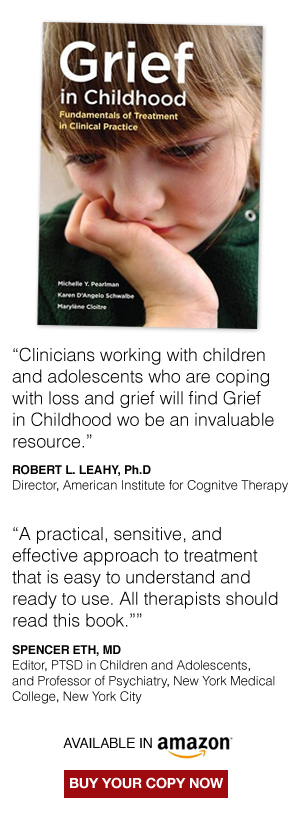Like most of you, I’m reeling from the tragedy in Connecticut yesterday. It’s always awful to hear about nonsensical acts of violence, but a school shooting targeting our youngest, most precious community members is almost too terrible to fathom.
We know that the images are going to be everywhere… on tv, social media, newspapers and magazines… for weeks and longer. Adults tend to make sense of these kinds of events by talking with others and by finding out all we can about who did it, why it happened, and all about the gory details. This delving into the details may be helpful and comforting for some. But this is not helpful for our kids.
I’m usually a big proponent of talking to kids honestly about all kinds of scary things. For example, I teach parents how to tell their children that a loved one is dying, how to prepare them for medical procedures such as surgery or chemo, and how to explain difficult life events like everything from divorce to natural disasters. But these things are a part of life that kids eventually need to know about and understand. The child who is shielded from information about a loved one’s illness will not get to say goodbye. The child who isn’t told what is going to happen during their upcoming surgery will be even more afraid when arriving at the hospital. But school shootings and the like are thankfully not a part of most people’s daily lives. So do we tell?
When do we tell?
For children ages 7 or younger, there is no reason to share information about such a brutally violent event. Children do not really even have the cognitive ability to understand death until around age 6, and even adults have trouble wrapping our heads around the mass murder of kids. Telling young children about the killing of kids their own age can therefore be quite confusing, scary, and potentially traumatic, and is therefore not recommended. An exception to this would be if the child is directly impacted by what happened in some way (like living in that town or having a friend who was there), then we would want to help that child understand what has happened and above all reassure them of their own safety.
There is no hard and fast rule about what age to start talking about this kind of thing, and the bottom line is that you know your children best and should make decisions about what to share accordingly. I am hearing a lot about parents telling their school-age children about the shooting because they feel pressured to do so either by the media or by fears that they will find out on the bus or at school or from older children. If you believe that your child is old enough to understand and will hear about the tragedy elsewhere, then you may want to prepare them with your own discussion at home. You may also choose to wait and see if they hear about it, and then follow up with a supportive conversation (or more likely, a series of supportive conversations). Remember that it’s never too late to answer children’s questions, acknowledge their feelings, and reassure them that they are safe.
Preteens and teens may have already heard about what happened, and those who have heard are likely talking about it with each other. Talking to one’s own parents, and even just knowing that one’s parents are available and willing to talk, can be a great source of comfort, reassurance, and guidance about how to cope with and make sense of such tragedy.
What do we say?
Before talking to your children, think about what it is you want to convey. Consider each child’s age, ability to understand and cope, and personality style. Then speak with each child separately and privately so that you can attend to their individual needs. Start by asking what they have heard about what happened, and then listen to their own fears and concerns. Reassure them that these acts are rare and they are indeed safe at school. Provide specific examples of safety measures in place at their own schools (such as security guards and locked entry doors). Answer their questions simply and honestly, providing only as much information as they are asking for. Follow their lead about how much and how often to talk about it. If they have heard enough, they will likely let you know that by changing the subject or moving on. Likewise, if they want to know more, they will likely ask more questions. Keep in mind that talking to kids about terrible things isn’t so much about what you say, but about hearing them out, being a soothing presence, and responding to their questions and concerns.
What else can we do?
Experts agree that one of the most important things we can do to prevent unnecessary fear and anxiety is to limit exposure to graphic or scary images and details. Turn off the tv news when your kids are around. (It’s not a bad idea to turn it off for your own sake as well). Be cautious when talking to other adults in person or by phone so that children do not overhear what is not meant for their ears. For older children and teens, reinforce their empathy by acknowledging their feelings and by talking about ways to help (such as sending a letter of support, making a donation, or doing community service in honor of the victims).
As our thoughts and prayers go out to the Newtown, Connecticut community, we will all do our best to keep our children safe and to reassure them that we will do everything in our power to keep them that way. If you have any thoughts or questions, please post them as a comment below or email me directly at michelle@michellepearlman.com.



 I am a clinical psychologist living and working in private practice in Rockland County, New York. I am also an adjunct faculty member in the Department of Child and Adolescent Psychiatry at the New York University (NYU) School of Medicine (
I am a clinical psychologist living and working in private practice in Rockland County, New York. I am also an adjunct faculty member in the Department of Child and Adolescent Psychiatry at the New York University (NYU) School of Medicine (